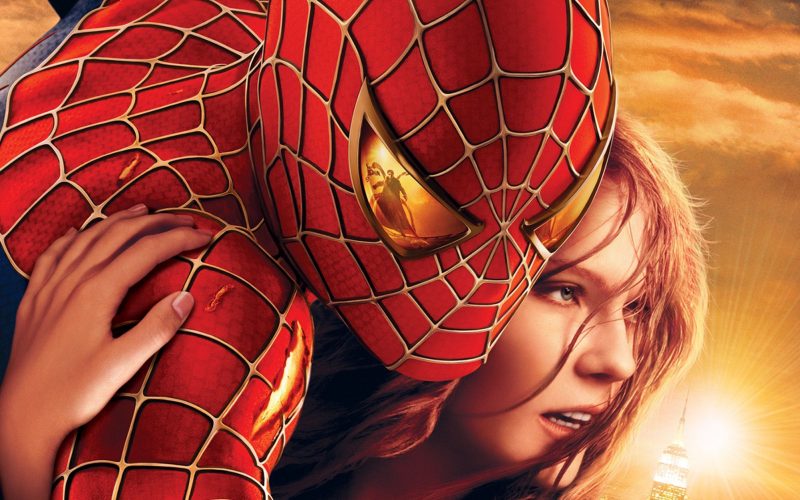Romance, Idolization, and Ego in Sam Raimi’s Spider-Man Trilogy.
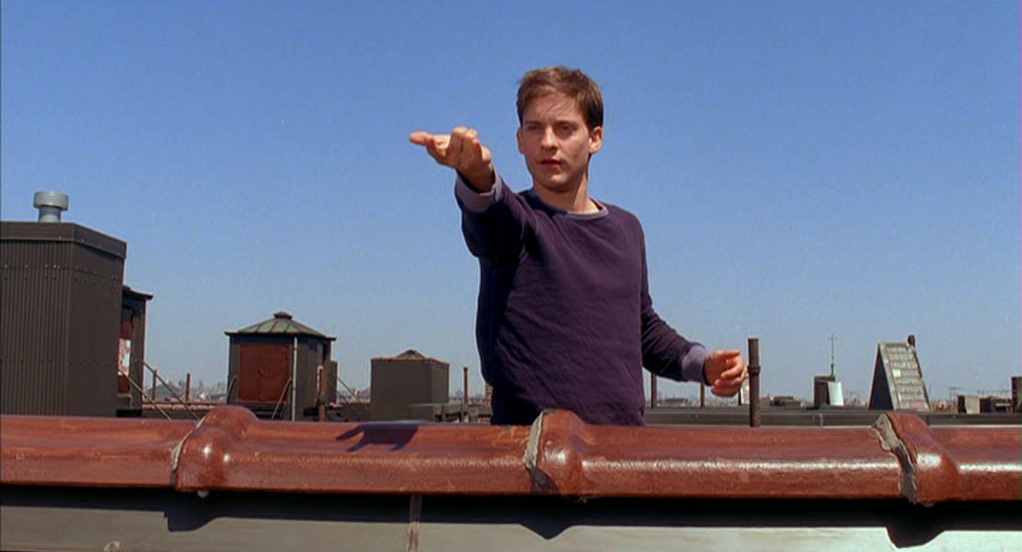
I like to imagine that the final shot in Spider-Man 3 (2007) in which we see Peter Parker and Mary Jane Watson embrace one another, is a bittersweet meeting between old friends rather than something romantic. Nothing in the final film suggests that Peter (Tobey Maguire) deserves to live happily ever after with MJ, and I think that Kirsten Dunst’s character is gifted enough agency throughout the three films to suggest that she’s smart enough to know when her love and affection is no longer deserved.
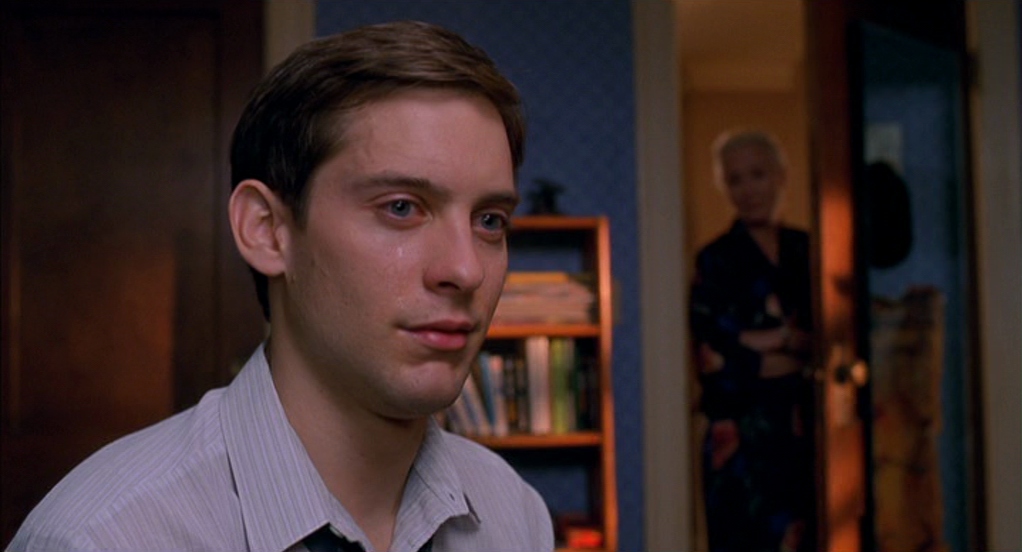
Spider-Man 3 has a lot of problems. It fails its villains, jamming too many into one film, creating a mishmash instead of narrowing its focus in the same way that the first two films had done. It breaks the rules of its own universe, in terms of the poorly developed alien symbiote and the sudden birth of Venom, and it retcons the identity of Uncle Ben’s murderer for the sake of introducing a dramatic new villain that can’t live up to the brilliance of Spider-Man’s Green Goblin or Spider-Man 2’s Doctor Octopus.
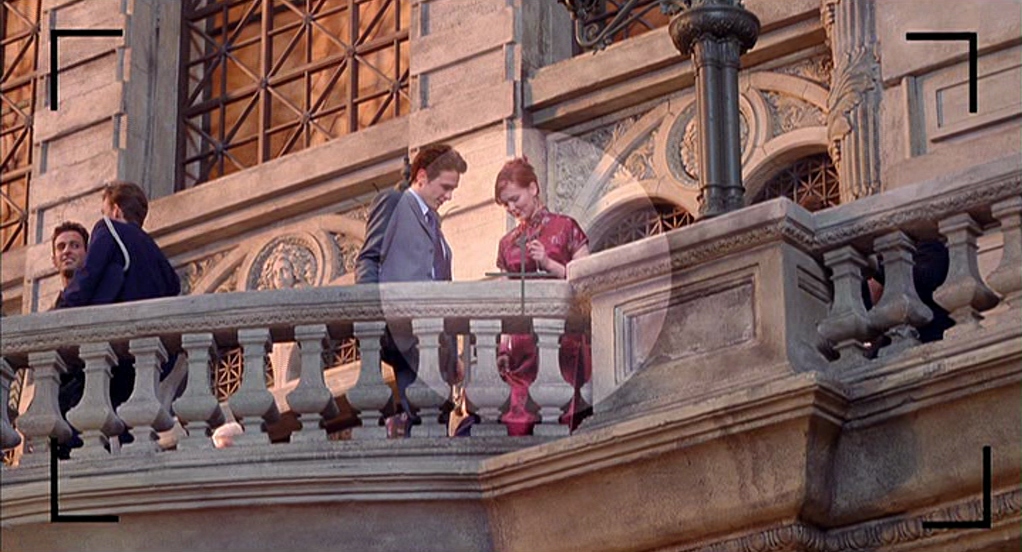
And yet, despite its flaws, Spider-Man 3 is an entertaining flick. It is perhaps too enthusiastic in its attempt at dragging Peter Parker down, but it assuredly offers a wakeup call to a young man who’s become lost in the spotlight. Raimi clearly wanted to portray Peter as someone who has bought into his own hype, and yet there’s an unmistakable indulgence of hero worship that runs through all three films. Sometimes it works wonderfully, as when Spider-Man saves a train full of people from death, whereas other times it‘s too ham-fisted, such as when the citizens of New York cheer on his arrival at the start of the third film’s final act.
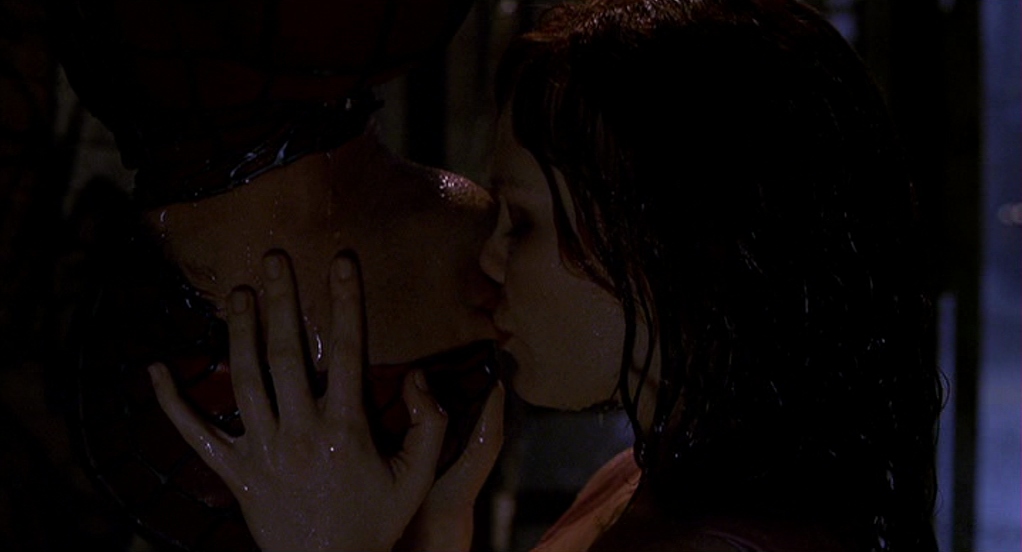
The city’s admiration for its hero is earned from almost the beginning. Raimi’s trilogy has a sunnier disposition than we’re used to, and the editing makes for a dynamic and unique visual style that adds a twisted edge, an unpredictable quality to the experience. The depiction of one of Marvel’s most prized heroes however, is far from grim. The people worship Spidey as a celebrity more-so than a hero, and any time that his presence in the city is questioned, it’s quickly amended. The character rarely actually fails when he’s in the costume. It’s Peter’s personal life where the real drama happens, and great attention is paid to developing those personal conflicts with the villains of each film and making foils of them (for the most part).
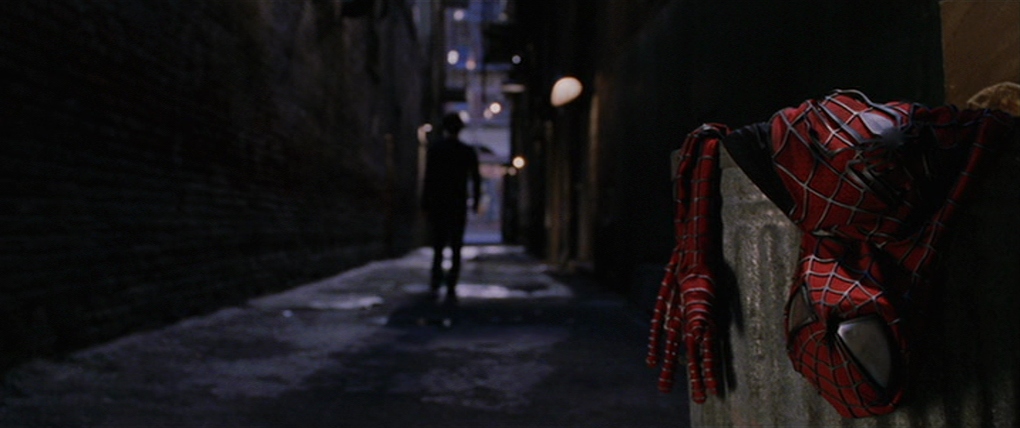
Willem Dafoe is intentionally over-the-top in the first film, and indeed the entire movie’s unique personality is one that completely embraces its comic book origins and the youthful exuberance of its characters. It’s an element that helps to set the characters apart, because most heroes draped in capes and cowls are adults and as such their films can get preoccupied with darker themes (for better or for worse, depending on execution). Because Peter Parker is an adolescent, there’s a more energetic and wholesome exploration of experiences that we’ve all had to some degree. While origin stories are old hat at this point, there’s something fundamentally whimsical about this one that helps its ageing process. Sixteen years later, and Spider-Man still stands up among modern superhero films and even stands out due to its unrivaled tone.

Of course, the angst eventually makes its way into the series, and quite emphatically too. It simmers in the first film, where Peter’s borderline-creepy infatuation with Mary Jane is mostly endearing, which builds to a climactic moment in which Peter turns down the opportunity to realize his romantic dream. This never plummets into melodrama despite the ever-present cheesiness, because Peter’s dilemmas feel earned. In Spider-Man 2, Peter’s decision weighs heavily on him as he watches MJ move on from him and become engaged to the son of J. Jonah Jameson, the aggressive caricature whose portrayal by J.K. Simmons won all of our hearts. The son himself is an astronaut, because he need to be something, I guess the series embraces its camp.
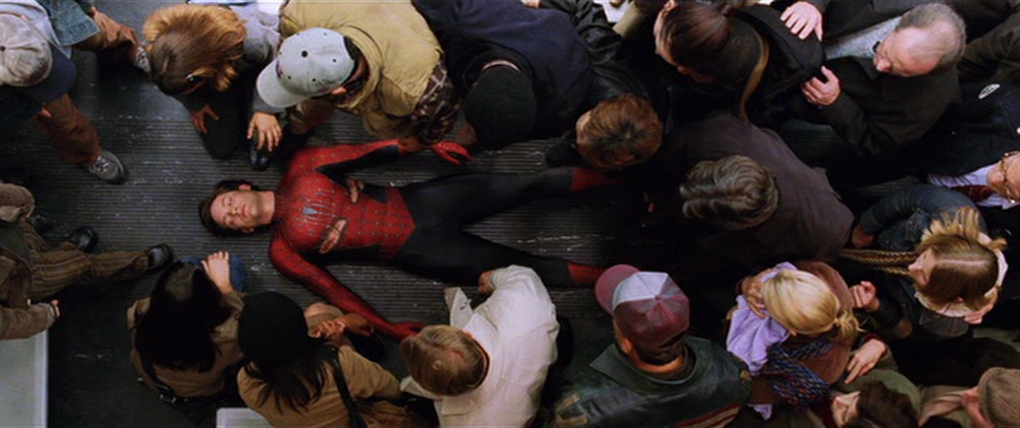
Peter’s emotional turmoil over the pressures of being Spider-Man and the sacrifices that choice forces him to make has a negative affect on his ability to be New York’s web-slinging superhero, and the film pairs him up against an idol of his who has achieved romantic and professional success. That idol then experiences an accident that turns him into his rival. Everything works out for Peter even when it perhaps shouldn’t, because above all else this is a feel-good story more-so than any other superhero film. It’s in this second film that the cracks start to show in how Peter treats Mary Jane. He means well, but he’s oblivious to the emotional craters he’s battering into Mary Jane by constantly changing his mind and as such toying with her unintentionally in the process.
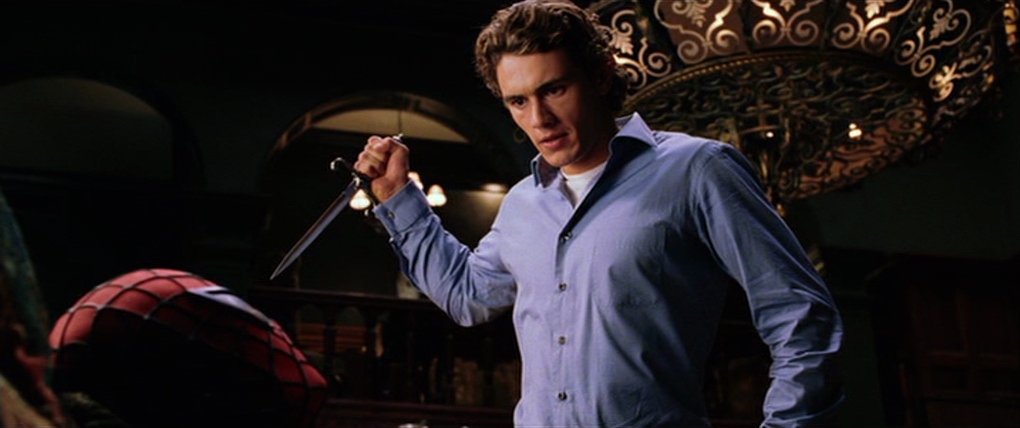
How much leniency do we afford to a trilogy that launched sixteen years ago, a long time in today’s social climate? Certainly, MJ’s status as the ‘damsel in distress’ can very easily overshadow just how much of a presence she plays in the overarching narrative. As Roger Ebert explained in his review of Spider-Man 3 back in 2007, “here’s a beautiful, (somewhat) talented actress good enough to star in a Broadway musical, and she has to put up with being trapped in a taxi suspended 80 stories in the air by alien spider webs.” And it does stick out because, despite her being the most emotionally mature presence in the series, she feels shortchanged due to her being in constant need of saving. At risk of sounding too political, it’s a course of action that might not be swept under the rug today.
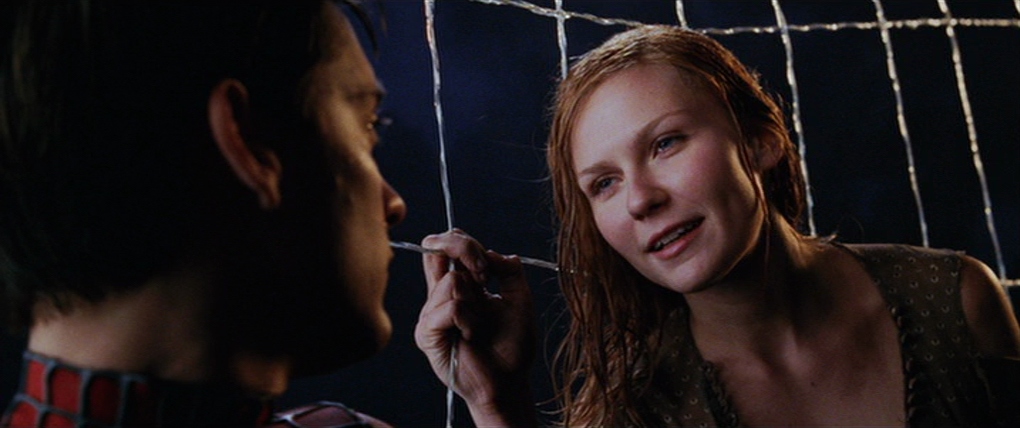
The third film doubles down on Peter’s mistreatment of her. The most blatant example is, of course, his taking Gwen Stacy (Bryce Dallas Howard) on a date to the very bar that Mary Jane is now, as a failed Broadway star, working at as a singer and waitress. He then proceeds to embarrass her by dancing very intimately with Gwen, for all and especially MJ to see. Yes, at this stage Peter is under the influence of the symbiote, which resembles the One Ring of The Lord of the Rings or the Horcrux in Harry Potter and the Deathly Hallows, and which has powers that aren’t very well established in a film that’s too stuffy to grant it the necessary time and attention. Despite that, I think Peter is not acting out of character so much as acting in a heightened manner, because he’s proven that while he does love MJ, he rarely puts her before himself unless he’s got his mask on.
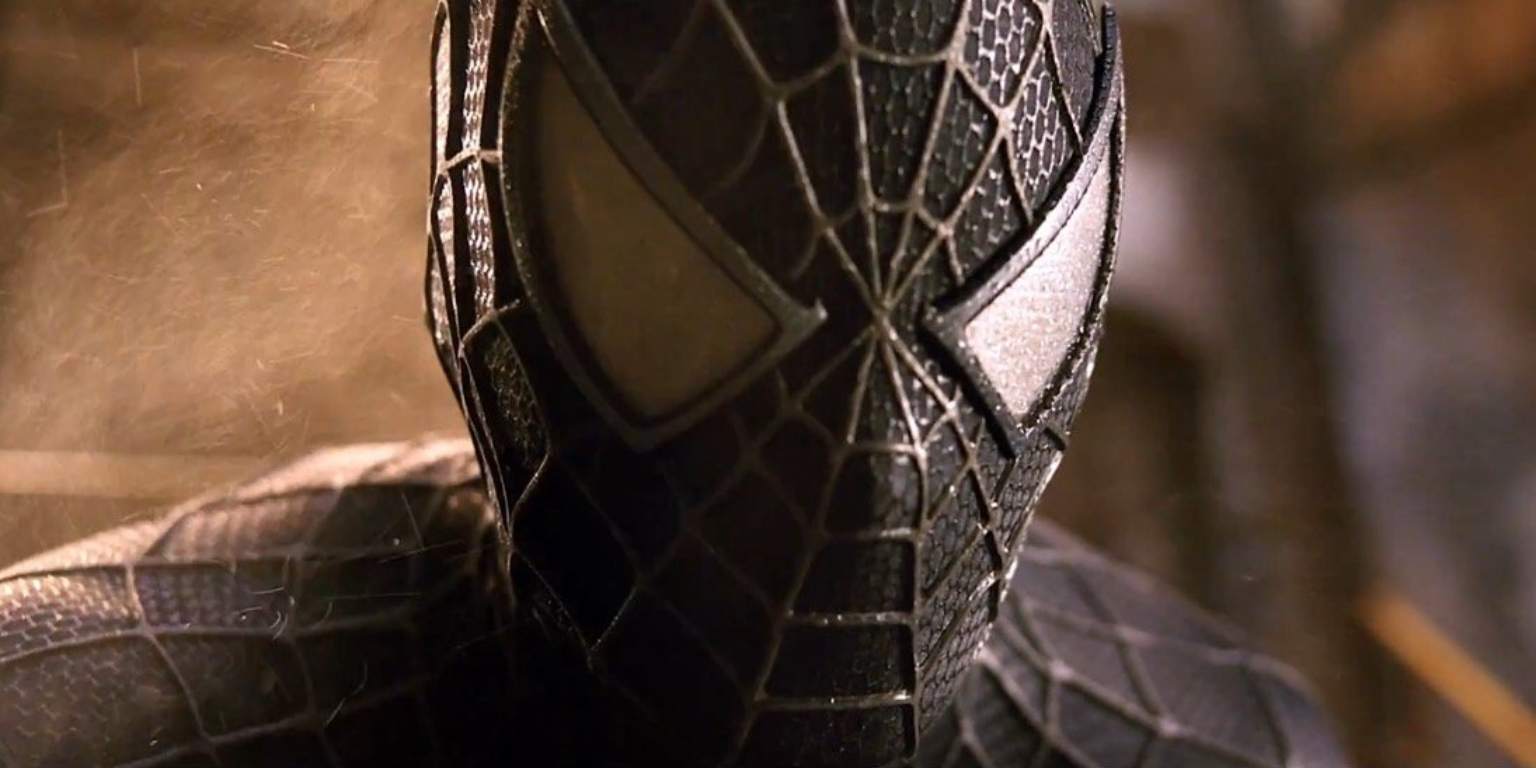
Whether the films are aware of their own prejudice toward Peter is hard to tell. They’re so preoccupied with their euphoric view of Spider-Man that there’s a trickle-down effect that correlates to how the person under the mask is portrayed. Whatever the case though, it adds another element to the conversation. We can start to consider the effects that heroism has particularly on a teenager and his progression into young adulthood, specifically in terms of the difference between ego and pride and where that line is drawn when it comes to how Peter behaves.
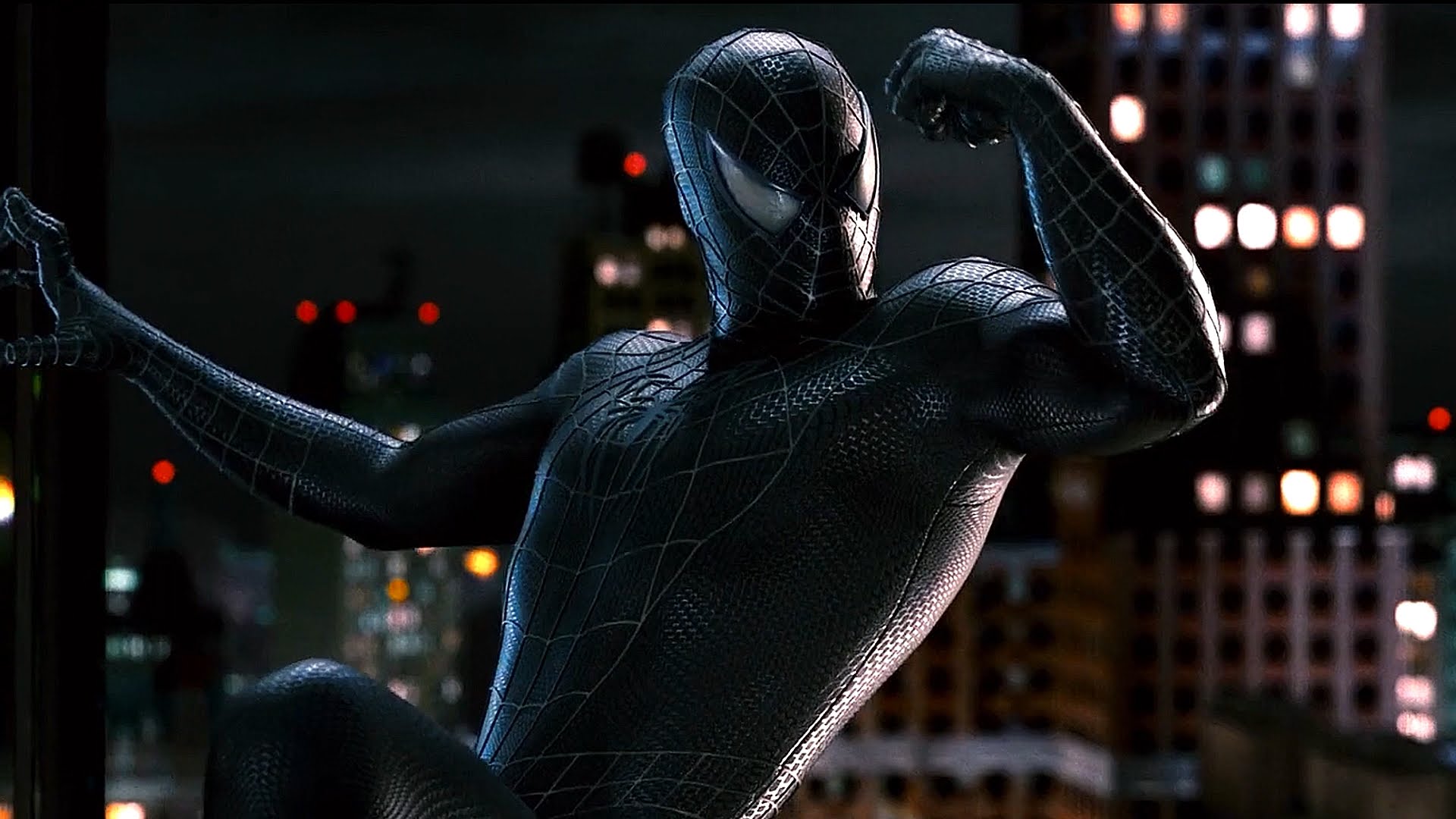
Of course, there’s also Harry Osborne (James Franco), whose character goes in just about every coneivable direction in the third film. His story arc, particularly in the first two, is one of the elements that help to tie the trilogy together as a cohesive, narrative whole. Best friends with Peter Parker but with a severe hatred of Spider-Man, whom he believes killed his father at the end of the first film, Harry makes two attempts on Peter’s life in the final film, suffers amnesia and becomes a care-free spirit, gets his memory back, and eventually joins the good fight and dies because of it. His death is admittedly sad, but the character is not nearly as effective as Mary Jane for a couple of reasons. His arc is intrinsically tied to Peter’s, to the point that nothing else really helps to define him. Contrast that with MJ, who has a life and aspirations of her own. Peter though, is a crux to both of them, and yet Mary Jane at least is attempting to lead a life of her own. Secondly, Harry’s conclusion feels incredibly rushed, as though two films-worth of development have been condensed into the trilogy’s finale.
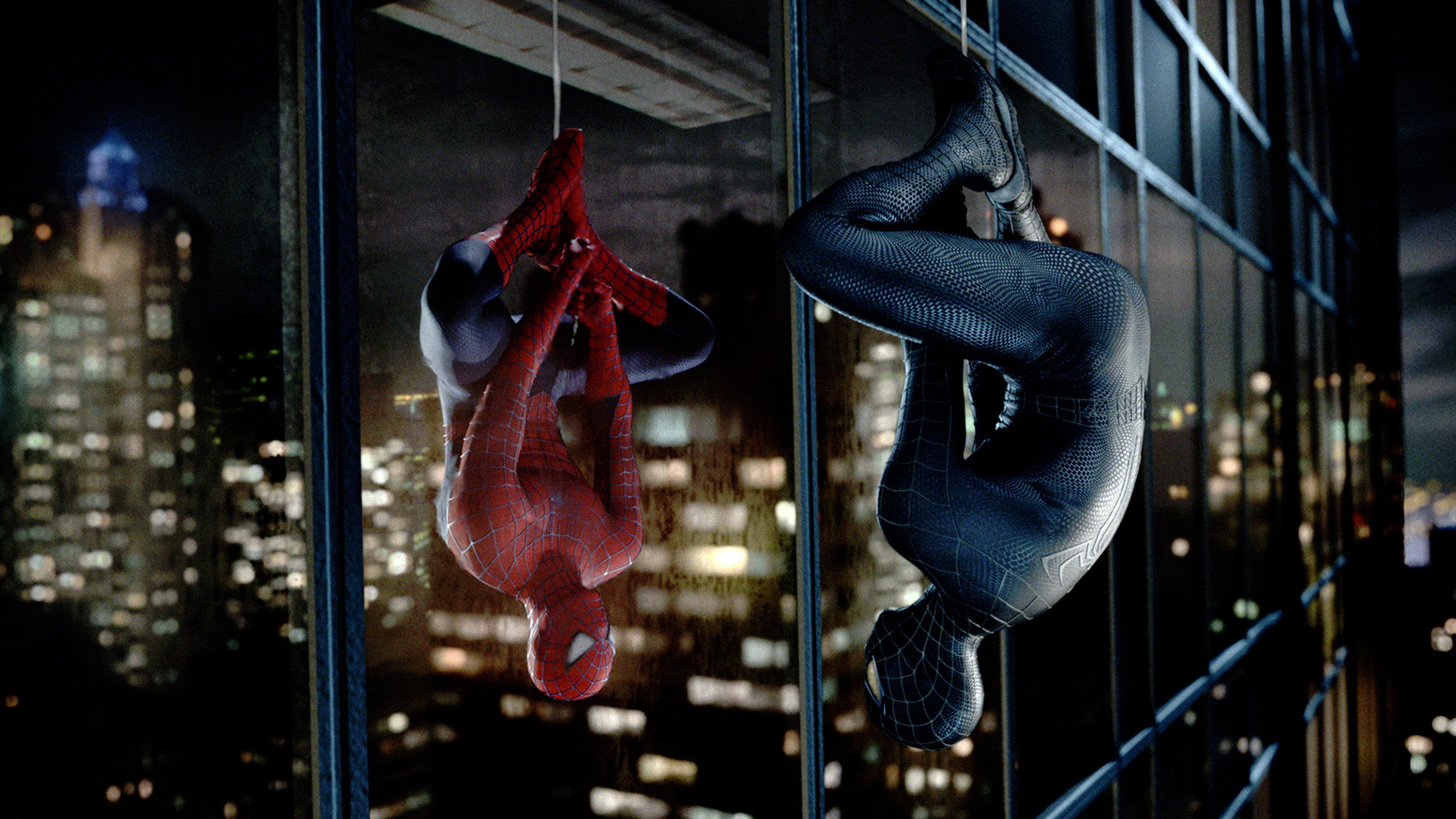
It’s appropriate that the final film ends with Peter and Mary Jane, because it was always about them. It’s a relationship that’s both loving and toxic, and I think there’s even more there when we consider that MJ’s father was an alcoholic and an abuser. Of course, the film is family-friendly, so these darker themes are more implicit. But when she mentions that even her father has come to see her show (only to get money off of her, as she footnotes), it creates a connection between her childhood under his thumb and her gravitation toward a man who can only give fifty percent to the relationship. I don’t think Peter ever offers what she might want from the relationship, and I don’t think she ever asks for too much either.

Regardless of its rare flaws, the Sam Raimi Spider-Man trilogy is an entertaining example of how to properly tell a light, well-meaning, and high-spirited story with larger-than-life characters that feel relatable despite that. Even the clearly flawed and oft-lambasted third film is not without merit and presents a fine conclusion to the story even if the parts are not quite as satisfying as the whole. With so great a range of films adapting timeless comic book characters today, this rendition of our friendly neighbourhood Spider-Man still stands out as a unique experience, and it’s because of the colourful villains, mostly lovable characters and, above all else, well realised relationships that remind us of the ones we have in our own lives.

